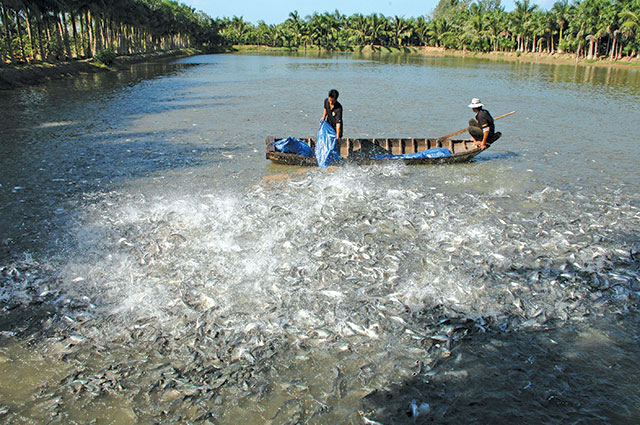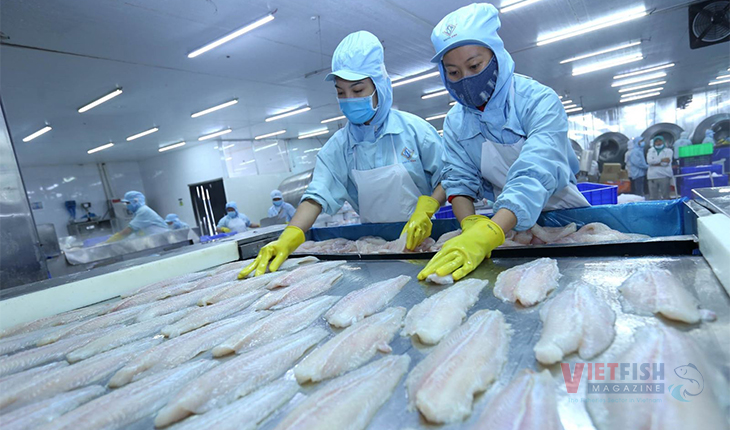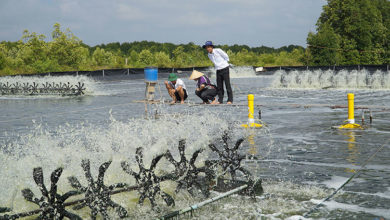Applying science and technology to enhance the value of the pangasius industry
One of Dong Thap's top highlights in 2024 is its leadership in national export value for two key industries: rice and seafood, despite economic challenges. The pangasius industry remains a key driver in seafood exports.
Pangasius has long been identified as a primary industry of the province, with a farming area of 2,630 hectares and an output of 540,000 tons. In addition to the annual expansion of farming areas, the province places significant emphasis on the application of science and technology to increase the industry’s value.

In 2024, the agricultural sector implemented four scientific research results to address issues such as liver-kidney necrosis disease, swim bladder disease, bacterial infections, and the processing of by-products into organic fertilizers. These efforts have reduced production costs and improved efficiency. Furthermore, in collaboration with the Research Institute for Aquaculture II, the province has introduced genetically improved broodstock with faster growth and disease resistance, gradually replacing the local broodstock to enhance seed quality.
The digital transformation of pangasius industry management is also a focus, with data being updated on the agricultural sector’s digital transformation platform. Challenges in ensuring accurate and comprehensive data input have been addressed, supporting local leaders’ management and decision-making. Regular updates on aquaculture data, environmental monitoring, seed production, feed manufacturing, and new product development are shared on the national database of the Ministry of Agriculture and Rural Development, facilitating easier access for businesses.
Pangasius farming is subject to stricter controls compared to other industries due to continuous inspections from importing partners. Therefore, the Department of Agriculture and Rural Development (DARD) has collaborated with related units to support businesses, cooperatives, and farmers in adopting production standards such as VietGAP, GlobalGAP, ASC, and BAP, along with implementing traceability.
To date, the province has 374 facilities with farming identification codes covering an area of 1,636 hectares. Of this, 40.8% (667 hectares) belongs to businesses, and 59.2% (969 hectares) is managed by individual farmers. Most small-scale farmers work in partnership with feed producers and processing companies to stabilize input and output supply, covering approximately 805 hectares. Currently, 242.4 hectares (15% of the province’s pangasius farming area) meet recognized standards: VietGAP (403.27 hectares), GlobalGAP (12.02 hectares), ASC (123.48 hectares), BAP (27.06 hectares), ASC and GlobalGAP (31.64 hectares), ASC and BAP (60.87 hectares), and GlobalGAP and BAP (10.74 hectares).
The success of Pangasius Festivals has significantly boosted the industry’s development in 2023 and 2024. In 2022, the province held its first Pangasius Festival themed “Reaching Global Seas.” The event included cultural activities, trade promotions, and a series of conferences on farming, processing, and consumption, as well as agricultural extension seminars. Practical solutions for the industry’s growth in the coming years were proposed.
In November 2024, the province hosted another Pangasius Day under the theme “Green Journey – Green Value.” Unlike the first event, this focused on the primary stakeholders, farmers and business owners, and emphasized building the “Four Houses” linkage: the State, scientists, businesses, and farmers. This event fostered collaboration and promoted environmental protection and sustainable development in aquaculture.
By 2025, the province aims for 100% of pangasius farming facilities to be digitally identified as required and certified for safe production practices or committed to food safety standards. Additionally, 50% of the farming area will apply and be certified under good agricultural practices (GAP). Environmental monitoring will be strictly enforced, with 60% of farming areas equipped with wastewater and sludge treatment systems, and 100% of water sources from main rivers monitored regularly.
The province will continue restructuring the pangasius industry, focusing on adding value and achieving sustainable development by applying advanced science and technology. Solutions include cost reduction, quality improvement, market adaptation, and climate resilience. The digital transformation and the application of new technologies, such as probiotics, herbal medicines, vaccines, automatic feeding, automated monitoring, and digital data management, will be integrated across stages from seed production to farming, harvesting, and transportation. These efforts aim to improve survival rates, ensure food safety, reduce costs, and enhance competitiveness.
VFM





